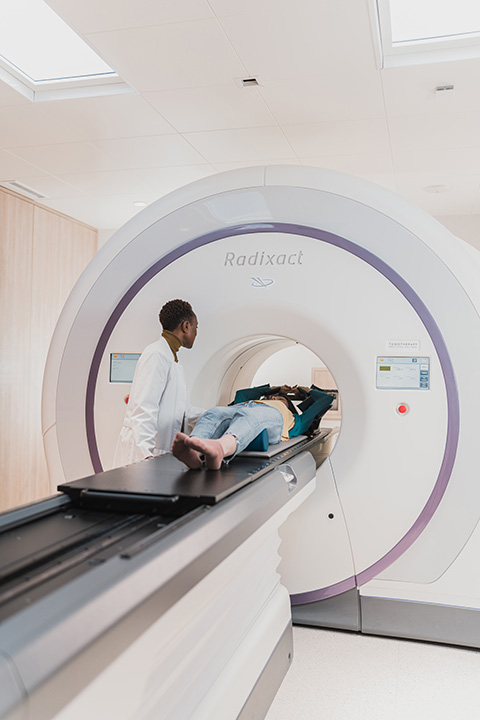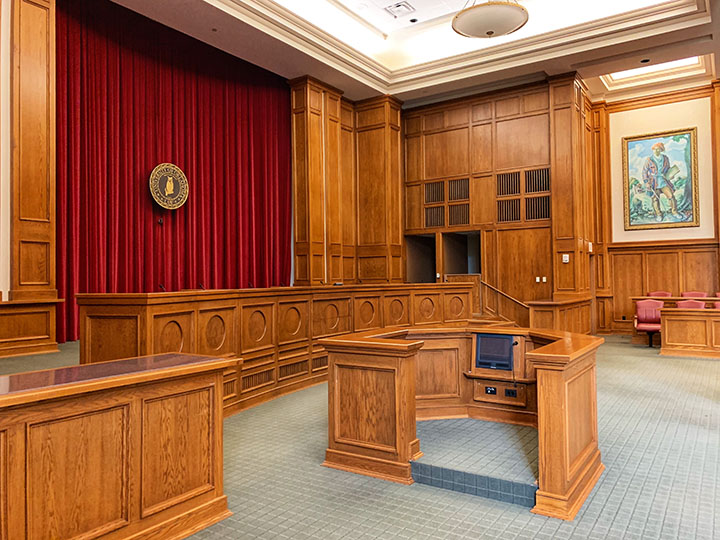The Anatomy of A Personal Injury Case
If you’ve been injured due to someone else’s negligence, you may be entitled to compensation for your medical bills, lost wages, and pain and suffering. However, getting that compensation requires filing a personal injury lawsuit. Here’s a step-by-step guide to the personal injury lawsuit process:

Step 1: Seek Medical Treatment
The first step after suffering a personal injury is to seek medical treatment. Even if your injuries seem minor, it’s important to get checked out by a doctor to ensure there are no hidden injuries. Additionally, if you plan on pursuing a personal injury lawsuit, you’ll need documentation of your injuries and medical treatment.
Step 2: Hire an Attorney
If you plan on pursuing a personal injury lawsuit, the next step is to hire an attorney. An experienced personal injury attorney can help you navigate the legal system and maximize your compensation. When choosing an attorney, look for one who has experience in personal injury cases, a good track record, and a history of obtaining significant settlements or verdicts for their clients.
Step 3: Investigation
Once you’ve hired an attorney, they’ll begin investigating your case. This may involve gathering evidence, interviewing witnesses, and reviewing medical records. The goal of the investigation is to determine who was at fault for your injuries and how much compensation you’re entitled to.
Step 4: Demand Letter
After completing the investigation, your attorney will typically send a demand letter to the defendant’s insurance company. This letter will outline the facts of the case, the damages you’ve suffered, and a settlement demand. The insurance company will then either accept the demand, make a counteroffer, or deny the claim outright.
Step 5: Filing a Lawsuit
If the insurance company refuses to make a fair settlement offer, your attorney may recommend filing a lawsuit. This involves filing a complaint in court, which outlines the legal and factual basis of your claim. The defendant will then be served with the complaint and will have a certain amount of time to respond.

Step 6: Discovery
After the lawsuit has been filed, both parties will engage in the discovery process. This involves exchanging information and evidence relevant to the case. Discovery may include depositions, written interrogatories, requests for documents, and requests for admissions. The purpose of discovery is to gather as much information as possible about the case before trial.
Step 7: Pre-Trial Motions
Before trial, either party may file pre-trial motions to resolve certain legal issues. For example, the defendant may file a motion to dismiss the case for lack of evidence or to exclude certain evidence from trial. The plaintiff may file a motion to compel the defendant to provide more information during discovery.
Step 8: Settlement Negotiation
After discovery is complete and pre-trial motions have been decided, the parties may engage in settlement negotiations. This involves attempting to reach a mutually agreeable settlement before trial. Settlement negotiations may occur at any time during the case, and may involve multiple rounds of negotiations.

Step 9: Trial
If a settlement cannot be reached, the case will proceed to trial. During trial, both parties will present their evidence and arguments to a judge and/or jury. The judge or jury will then decide whether the defendant is liable for the plaintiff’s injuries and, if so, how much compensation the plaintiff is entitled to.
Step 10: Appeal
If either party is dissatisfied with the outcome of the trial, they may appeal the decision to a higher court. An appeal may be based on legal errors made during the trial or new evidence that was not available at the time of trial. The appeals process can be lengthy and complicated, and may involve written briefs and oral arguments before a panel of judges. If the appeals court finds that errors were made during the trial, they may order a new trial or reverse the previous decision. However, if the appeals court upholds the previous decision, the case may be closed or the losing party may seek further appeal to an even higher court.
Step 11: Collection
Assuming the plaintiff is successful at trial or reaches a settlement, the final step in a personal injury lawsuit is collection. The defendant may be required to pay the plaintiff a lump sum or make periodic payments over time. If the defendant fails to pay, the plaintiff may need to take legal action to enforce the judgment. This may involve garnishing the defendant’s wages or seizing their assets.
The process of a personal injury lawsuit can be long and complicated, but it’s often necessary to obtain the compensation you deserve for your injuries. By following these steps and working with an experienced personal injury attorney, you can increase your chances of a successful outcome. Remember to seek medical treatment as soon as possible after your injury, hire a qualified attorney, and be patient throughout the legal process. With dedication and perseverance, you can obtain the compensation you need to move forward after a personal injury.
Definitions: Common Personal Injury Terms
Below are the definitions of 20 common terms you may hear throughout the course of your personal injury case.
Negligence – failure to exercise reasonable care, resulting in harm or injury to another person.
Liability – the state of being responsible for something, especially by law.
Damages – compensation awarded to a person who has suffered harm or loss as a result of another’s action or inaction.
Personal injury – an injury to a person’s body, mind, or emotions, as opposed to damage to property.
Statute of limitations – the time limit within which a legal action must be taken.
Tort – a wrongful act or an infringement of a right (other than under contract) leading to civil legal liability.
Compensation – money or other benefits given to someone as a recompense for loss, injury, or suffering.
Settlement – an agreement between parties to resolve a dispute, usually involving payment of money.
Plaintiff – the person who initiates a lawsuit or brings a legal action against another.
Defendant – the person or entity against whom a lawsuit is brought.
Jury – a group of people sworn to give a verdict in a legal case based on evidence presented to them in court.
Evidence – information presented in court to prove or disprove a fact.
Expert witness – a witness who is qualified to testify based on their knowledge, skill, experience, or training in a particular field.
Deposition – a pre-trial legal procedure in which a witness gives testimony under oath outside of court.
Discovery – the process by which parties in a lawsuit exchange information and evidence with each other.
Medical expenses – costs incurred for medical treatment, including hospital bills, doctor’s fees, and medication.
Lost wages – income lost due to an injury preventing someone from working.
Punitive damages – compensation awarded to punish a defendant for their actions, rather than just compensate the plaintiff.
Comparative negligence – a legal doctrine in which a plaintiff’s damages may be reduced if their own negligence contributed to their injuries.
Contingency fee – a fee charged by a lawyer only if they win a case, usually a percentage of the amount awarded to the plaintiff.
